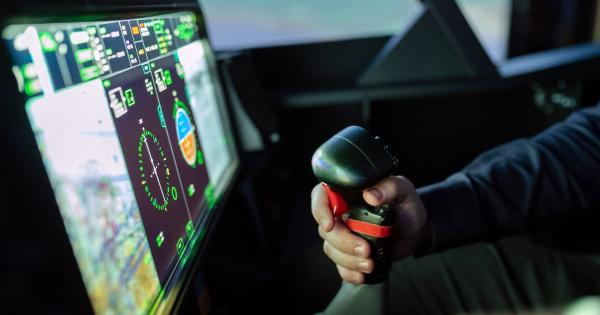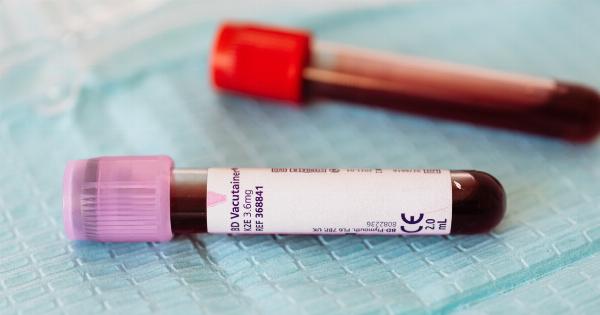Diagnosing cancer at an early stage is crucial for effective treatment and improved patient outcomes. Traditional methods of cancer detection usually involve invasive procedures, such as biopsies or imaging tests.
However, recent research suggests that our four-legged friends – dogs – may offer a non-invasive and potentially more accurate way to diagnose cancer.
How Can Dogs Detect Cancer?
It’s been known for many years that dogs have an exceptional sense of smell. In fact, a dog’s sense of smell is estimated to be between 10,000 to 100,000 times more powerful than that of humans.
This extraordinary ability enables them to detect subtle scent changes in the human body, often imperceptible to our olfactory senses.
Researchers believe that cancer cells produce specific odors that canines can detect.
These odor changes occur due to volatile organic compounds (VOCs) released by cancer cells, which can mix with a person’s breath, urine, or even a specific organ’s odor. Dogs are trained to recognize these specific scent patterns through reward-based training techniques.
Successful Examples of Dogs Detecting Cancer
There have been multiple documented cases where dogs have successfully detected cancer in humans. In one study, researchers trained a group of dogs to detect lung cancer by smelling patients’ breath samples.
The trained dogs identified the presence of lung cancer with an impressive 97% accuracy rate.
Another study focused on detecting colorectal cancer by using trained dogs to analyze patients’ fecal samples. The canine experts showed a sensitivity of 95% and specificity of 98%.
These results suggest that dogs could play a vital role in early detection and screening for various types of cancer.
Furthermore, dogs have shown their remarkable abilities to detect other types of cancer as well. In a case report published in The BMJ, a dog continuously sniffed, nuzzled, and pawed at a specific area on its owner’s leg.
The owner eventually sought medical attention, leading to the diagnosis of early-stage melanoma.
Advantages of Using Dogs for Cancer Detection
The potential benefits of using dogs for cancer detection are numerous:.
- Highly sensitive: Dogs have a high sensitivity to scents and can detect extremely low concentrations of VOCs associated with cancer.
- Non-invasive: Unlike invasive procedures like biopsies, a dog’s cancer-detection technique is non-invasive and painless for patients.
- Speedy detection: Dogs can detect cancer in a matter of seconds or minutes, which significantly reduces the time required for diagnosis.
- Cost-effective: Compared to expensive laboratory tests, dog training programs may provide a more cost-effective solution for cancer detection.
- Accessibility: Dogs can potentially be trained to detect cancer in remote and underserved areas where access to healthcare facilities and advanced diagnostic tools is limited.
The Science Behind Dogs’ Cancer-Sensing Abilities
Scientists have been investigating the underlying mechanisms of dogs’ cancer detection abilities.
It is believed that chemical compounds emitted by cancer cells, such as aldehydes, ketones, and aromatic compounds, contribute to the distinct odors detected by dogs.
Research has also identified the potential role of canine olfactory receptors in cancer detection.
A study published in Scientific Reports found that certain olfactory receptors in dogs respond specifically to the volatile compounds emitted by prostate cancer cells. Understanding these receptors and their interactions with cancer-specific VOCs could open new avenues for developing electronic cancer-detection devices.
The Future of Canine Cancer Detection
While the idea of using dogs for cancer detection shows significant promise, there are challenges that need to be addressed before widespread implementation can occur.
Standardizing the training process is crucial to ensure consistent and reliable results. Training programs should focus on developing standardized protocols and establishing rigorous certification procedures for the canine cancer-detection teams.
Additionally, scientists are working towards identifying the specific chemical compounds associated with different types of cancer.
This knowledge can help in designing electronic devices that mimic a dog’s sense of smell and detect cancer in a non-invasive manner.
Ultimately, the integration of dog-based cancer detection techniques along with advancements in electronic devices could revolutionize cancer diagnostics, improving early detection rates, and ultimately saving more lives.
Conclusion
Dogs, with their exceptional olfactory abilities, offer an exciting and non-invasive avenue for cancer detection.
The numerous successful cases of dogs detecting cancer, coupled with ongoing scientific research, provide a foundation for further exploration and development of this methodology. From lung cancer to melanoma, the potential for early and accurate diagnosis through dogs is undeniable. With continued research and standardization, dogs may become invaluable allies in the fight against cancer.



























